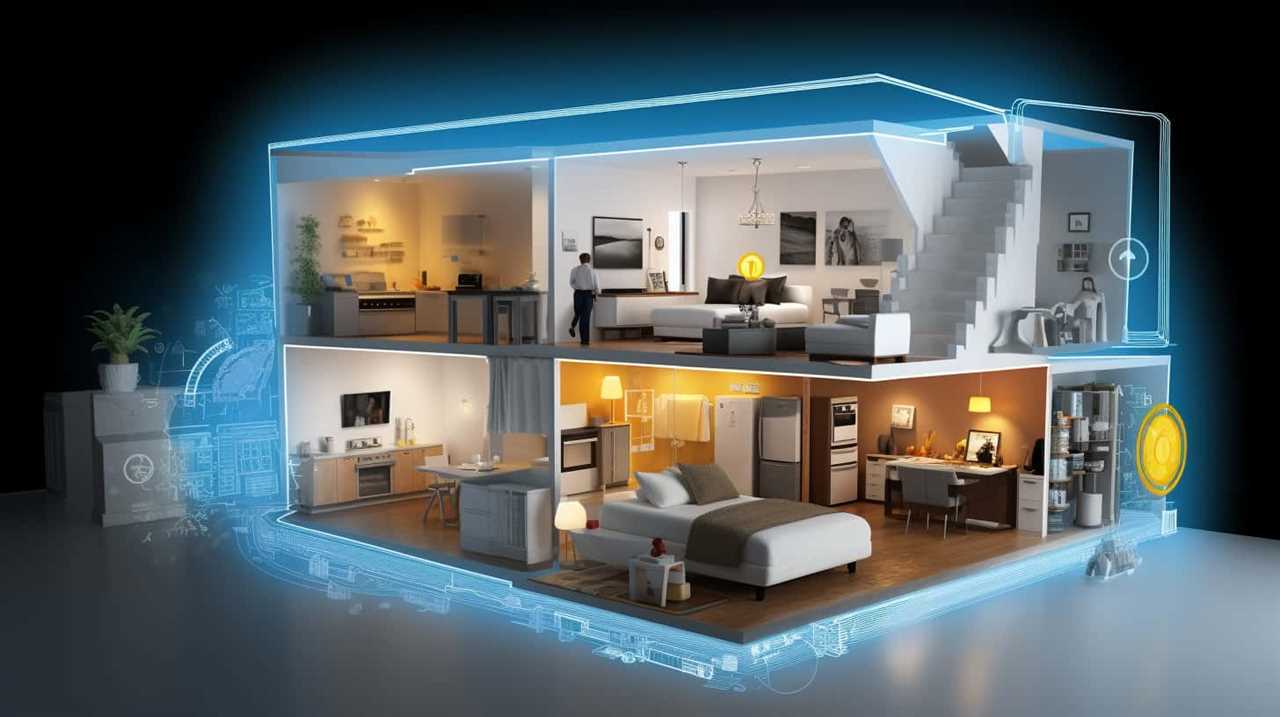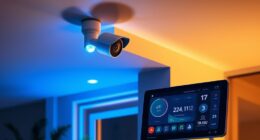In a world where energy conservation is becoming more and more crucial, the issue arises: can unplugging appliances help save electricity? This topic is especially important as many appliances still use power even when they are turned off, a concept known as standby power or phantom load.
This hidden cost of leaving appliances plugged in can have a significant impact on both our energy bills and the environment. By understanding the energy-saving potential of unplugging small appliances and incorporating this practice into our daily routine, we can make a tangible difference.
In this article, we will explore the benefits of unplugging appliances, debunk myths surrounding the effectiveness of unplugging chargers, and provide practical tips for incorporating unplugging habits into our lives.
Key Takeaways
- Standby power, also known as phantom load or vampire power, refers to the energy consumed by electronic devices when they are not in use but remain plugged in.
- Unplugging appliances and electronics when not in use can significantly reduce standby power consumption and save electricity.
- Standby power can account for a considerable portion of household energy usage, so being aware of it and taking action to minimize it is important.
- Using power strips with on/off switches or investing in energy-efficient appliances can also help reduce standby power consumption and promote energy efficiency.
The Impact of Standby Power
The impact of standby power on electricity consumption can be significant. Standby power, also known as vampire power or phantom load, refers to the energy consumed by electrical devices when they are turned off or in standby mode. Many electronic devices, such as TVs, computers, and gaming consoles, continue to draw power even when not in use, leading to unnecessary energy consumption and increased electricity bills.

Understanding energy consumption is crucial in order to identify and address the issue of standby power. By measuring and monitoring energy usage, individuals can gain insights into the devices that contribute the most to standby power and take practical steps to reduce it.
Some practical tips for reducing standby power include using power strips with on/off switches, unplugging devices when not in use, and opting for energy-efficient appliances. By implementing these measures, individuals can significantly reduce their standby power consumption and contribute to a more sustainable energy future.
Understanding Phantom Load
Phantom load, also known as standby power or vampire power, refers to the electricity consumed by electronic devices when they are not in use but remain plugged in. These hidden energy vampires waste significant amounts of standby power, contributing to unnecessary energy consumption and higher electricity bills.
Understanding phantom load is crucial for identifying and reducing the sources of phantom electricity, ultimately leading to energy and cost savings.

Hidden Energy Vampires
Understanding the concept of phantom load is essential when discussing hidden energy vampires. Phantom load, also known as standby power or vampire power, refers to the energy consumed by appliances and electronic devices even when they are turned off or in standby mode. These energy hogs can contribute significantly to your electricity bill without you even realizing it. By identifying energy drains and taking steps to minimize them, you can save both energy and money.
Here is a table that highlights some common household appliances and their average standby power consumption:
| Appliance | Standby Power Consumption (Watts) |
|---|---|
| Television | 5-10 |
| Game console | 10-15 |
| Computer | 2-7 |
Wasting Standby Power
Wasted standby power is a significant concern when it comes to conserving electricity and reducing energy costs. Standby power, also known as phantom load or vampire power, refers to the energy consumed by electronic devices even when they are not in use but remain plugged in. This hidden energy consumption can account for a considerable portion of a household’s energy usage. To address this issue, it is crucial to raise standby power awareness among consumers. By understanding the impact of standby power, individuals can make informed decisions and implement standby power reduction strategies.
These strategies include:
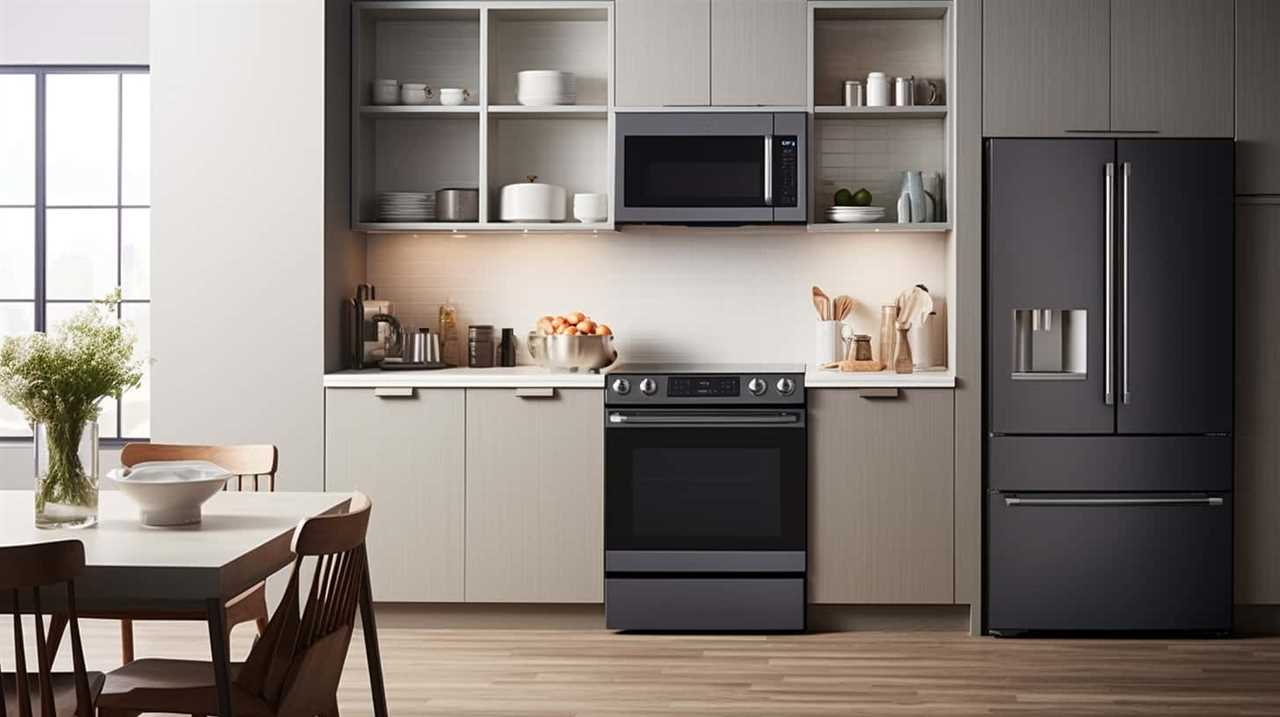
- Using smart power strips that automatically cut off power to devices when they are not in use.
- Unplugging electronic devices when not in use, such as chargers and small appliances.
- Investing in energy-efficient devices that consume less standby power.
By implementing these strategies, individuals can effectively reduce phantom electricity consumption and contribute to lower energy costs and a more sustainable future.
Now let’s explore the next section on reducing phantom electricity.
Reducing Phantom Electricity
To effectively reduce phantom electricity consumption, it is essential to gain a comprehensive understanding of the concept of phantom load. Phantom load, also known as standby power or vampire power, refers to the electricity consumed by devices that are plugged in but not actively in use. This phenomenon occurs because many appliances and electronic devices continue to draw power even when they are turned off or in standby mode.
To address this issue and reduce power consumption, various energy-saving strategies can be implemented. One effective strategy is to unplug devices when they are not in use. This simple action can significantly reduce phantom load and save energy. Another strategy is to use power strips with on/off switches. By plugging multiple devices into a power strip and turning it off when not in use, you can completely cut off the electricity flow to those devices, eliminating phantom load.

In addition, investing in energy-efficient appliances and electronics can also help reduce phantom electricity consumption. These devices are designed to minimize standby power and maximize energy efficiency. Furthermore, using advanced power management settings on computers and other electronic devices can help reduce their standby power consumption.
The Hidden Costs of Leaving Appliances Plugged In
Regularly leaving appliances plugged in can lead to significant hidden costs. While it may seem convenient to keep appliances plugged in at all times, this practice can result in unnecessary energy consumption and increased electricity bills.
Here are three hidden costs associated with leaving appliances plugged in:
- Standby Power Consumption: Even when appliances are turned off, they often continue to draw a small amount of power known as standby power. This can account for up to 10% of a household’s electricity usage.
- Phantom Load: Many appliances, such as televisions, computers, and chargers, consume energy even when not in use. This phantom load can add up over time and contribute to higher energy bills.
- Increased Maintenance and Replacement Costs: Leaving appliances plugged in can also lead to increased wear and tear, reducing their lifespan. This can result in more frequent repairs or the need for premature replacement.
Taking a practical approach by unplugging appliances when not in use can help minimize these hidden costs and promote energy efficiency.

Unplugging Vs. Using Power Strips
Using power strips as an alternative to unplugging appliances can help manage energy consumption more efficiently. While the practice of unplugging appliances for energy efficiency is effective, it can be inconvenient and time-consuming. Power strips offer a convenient solution by allowing multiple appliances to be plugged into a single outlet. This not only reduces clutter but also makes it easier to turn off multiple devices at once.
Additionally, some power strips come with built-in timers or surge protectors, providing added convenience and protection for appliances. By using power strips strategically, consumers can effectively control their energy usage without the hassle of constantly plugging and unplugging appliances.
This approach offers a practical and efficient way to save energy and reduce electricity costs.
The Energy-Saving Potential of Unplugging Small Appliances
When it comes to small appliances, such as coffee makers, toasters, and microwaves, the energy-saving potential of unplugging them should not be underestimated. These appliances often consume standby power even when not in use, known as standby power consumption.
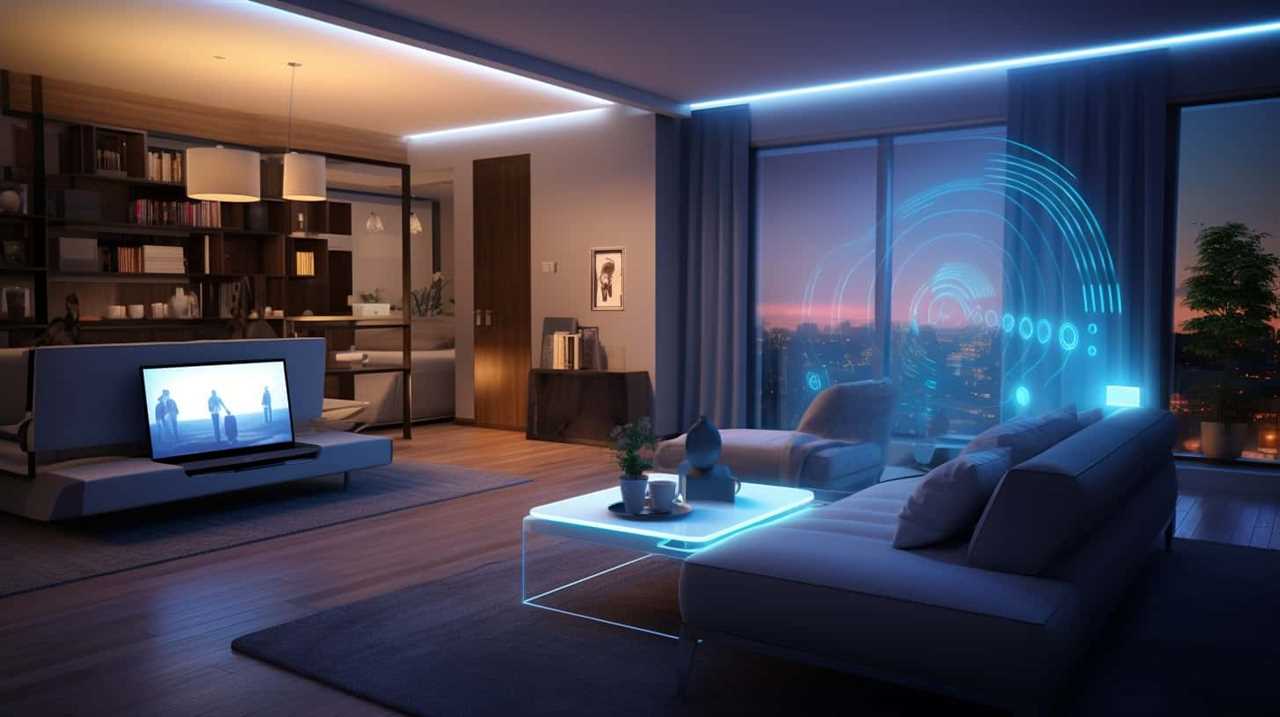
This phenomenon, commonly referred to as energy vampires, can account for a significant portion of household energy usage. By unplugging these small appliances when not in use, rather than just switching them off, individuals can effectively reduce their energy consumption and contribute to overall energy savings.
Standby Power Consumption
By minimizing standby power consumption, unplugging small appliances can significantly reduce electricity usage. Standby power, also known as vampire power or phantom load, refers to the energy consumed by electronic devices when they are not actively being used but are still plugged into an outlet. This energy waste can account for up to 10% of a household’s total electricity consumption.
To effectively reduce standby power and minimize energy waste, consider the following:
- Unplug small appliances such as coffee makers, toasters, and microwaves when not in use.
- Utilize power strips with switches to easily turn off multiple appliances at once.
- Invest in smart power strips that automatically cut off power to devices when they are not in use.
By implementing these measures, households can significantly reduce their energy consumption and contribute to a more sustainable future.
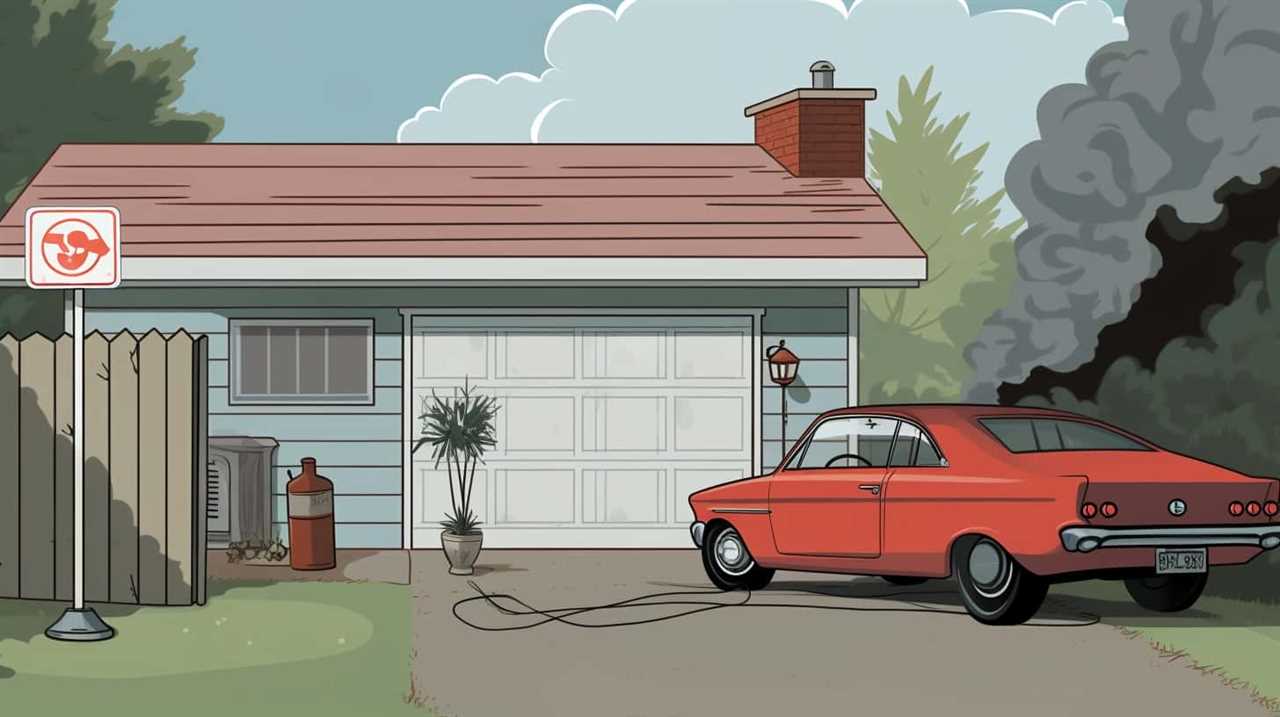
Now, let’s move on to the next section about ‘energy vampires’.
Energy Vampires
Minimizing standby power consumption by unplugging small appliances can significantly reduce electricity usage, particularly in the case of energy vampires. Energy vampires, also known as phantom power or vampire power, refer to the electricity consumed by electronic devices when they are turned off or in standby mode. These appliances continue to draw power even when not in use, contributing to unnecessary energy consumption and higher electricity bills.
Energy vampires are commonly found in households and can include devices such as televisions, game consoles, phone chargers, and kitchen appliances. While each individual device may consume a small amount of power, the cumulative effect can be significant. In fact, studies have shown that energy vampires can account for up to 10% of a household’s total electricity usage.
To combat vampire power and save energy, it is crucial to develop energy-saving habits such as unplugging devices when not in use. Using power strips with built-in timers or smart power outlets that automatically cut off electricity to unused devices can also help eliminate standby power consumption.
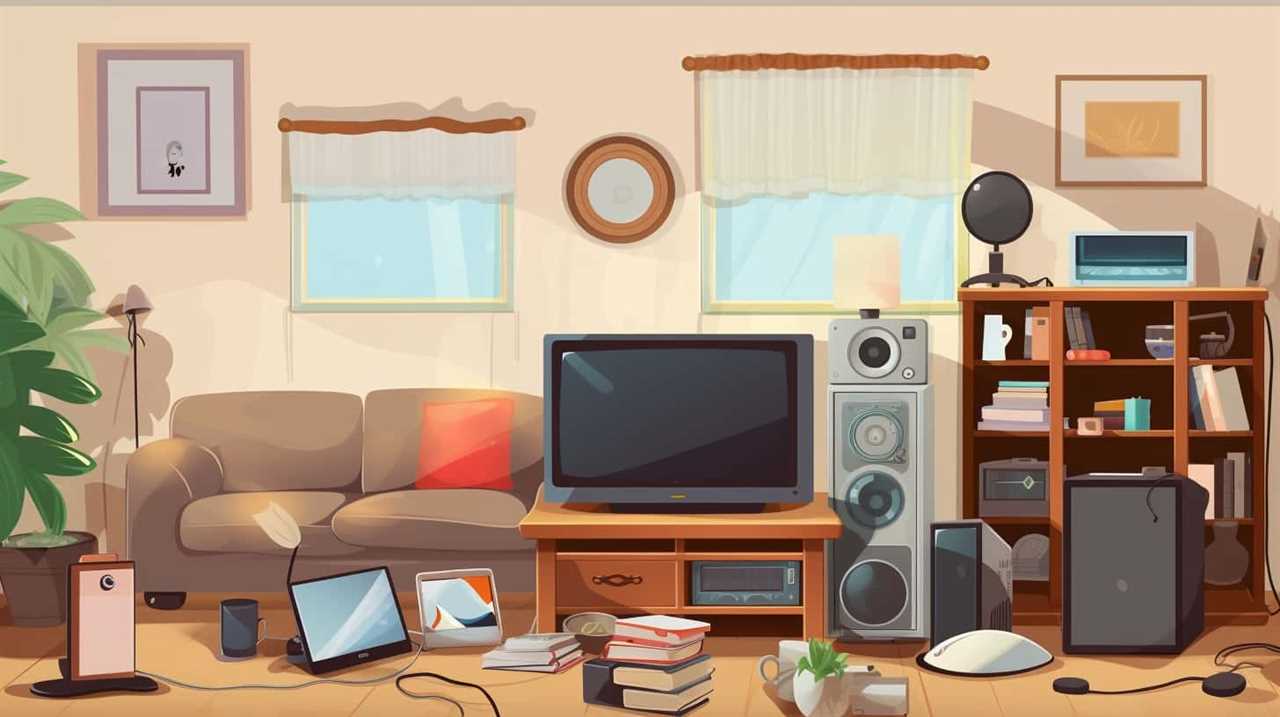
Unplugging Vs. Switching off
To maximize energy savings, it is important to consider the difference between unplugging small appliances and simply switching them off. While switching off appliances may seem like a sufficient energy-saving habit, unplugging them offers additional benefits.
Here are three reasons why unplugging small appliances can make a significant difference in energy consumption:
- Standby power: Many appliances continue to consume energy even when turned off, known as standby power. Unplugging them eliminates this ‘phantom’ energy usage.
- Vampire power: Certain appliances, such as chargers and power adapters, draw power even when not in use. Unplugging them prevents this energy wastage.
- Electrical surges: Unplugging appliances protects them from power surges, which can damage their circuits and reduce their lifespan.
By incorporating unplugging into our energy-saving habits, we can further reduce our electricity usage and contribute to a more sustainable future.
Now, let’s explore if unplugging electronics really makes a difference.

Unplugging Electronics: Does It Really Make a Difference
When it comes to saving electricity, the act of unplugging electronics can indeed lead to noticeable differences in energy consumption. Unplugging electronics is an effective strategy for reducing energy waste and minimizing standby power consumption.
Standby power, also known as vampire power or phantom load, refers to the electricity consumed by electronic devices even when they are not in use but are still plugged in. This standby power consumption can account for a significant portion of residential energy usage.
By unplugging electronics when they are not in use, individuals can eliminate this unnecessary energy consumption and reduce their overall electricity usage. However, it is important to note that certain devices, such as alarm clocks or routers, may require continuous power supply.
Therefore, it is essential to identify and unplug only those electronics that do not need to remain connected at all times.

Unplugging Kitchen Appliances: A Practical Approach
Unplugging kitchen appliances is a practical approach to saving energy in our homes. By adopting energy-saving kitchen habits and unplugging appliances when not in use, we can significantly reduce our electricity consumption.
The benefits of this practice include lower energy bills and a reduced carbon footprint, making it an effective and practical way to contribute to a more sustainable future.
Energy-Saving Kitchen Habits
Implementing energy-saving kitchen habits, such as unplugging kitchen appliances when not in use, can significantly reduce electricity consumption. By adopting these habits, individuals can contribute to a more sustainable and efficient use of energy in their homes.
Here are three energy-saving kitchen habits that can be easily incorporated into daily routines:
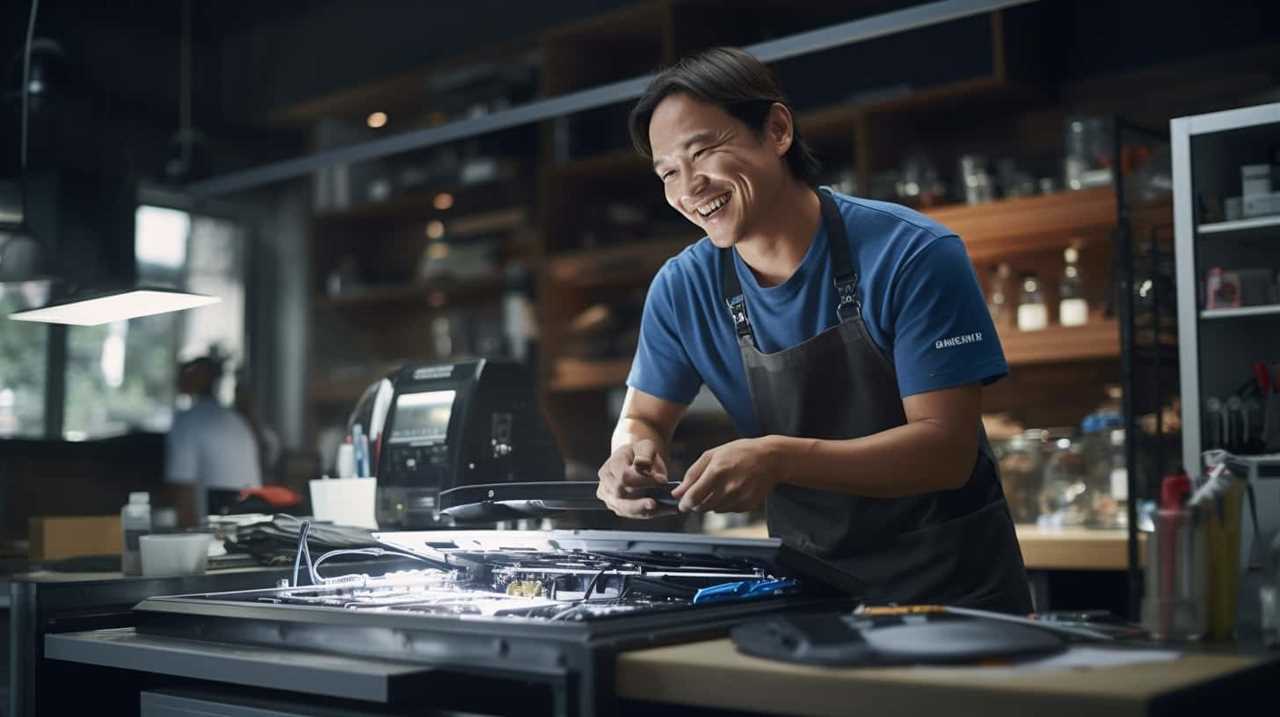
- Opt for energy-efficient cooking techniques: Using induction cooktops instead of traditional electric or gas stoves can help minimize energy waste. These cooktops heat up faster and distribute heat more evenly, reducing cooking time and energy consumption. Additionally, using the appropriate-sized pots and pans for the cooking task at hand can further enhance energy efficiency.
- Unplug kitchen appliances when not in use: Many kitchen appliances, such as toasters, blenders, and coffee makers, continue to consume electricity even when they are not actively being used. By unplugging these appliances when not in use, individuals can eliminate this standby power consumption and save energy.
- Utilize natural light and ventilation: Instead of relying solely on artificial lighting and ventilation, make use of natural light and fresh air. Open curtains and blinds during the day to allow sunlight to illuminate the kitchen, reducing the need for artificial lighting. Similarly, opening windows or using exhaust fans can help remove heat and odors, reducing the reliance on air conditioning and artificial ventilation.
Incorporating these energy-saving kitchen habits can not only help individuals save electricity but also contribute to a more sustainable and environmentally friendly lifestyle.
Benefits of Unplugging
By adopting a practical approach to unplugging kitchen appliances, individuals can experience numerous benefits in terms of energy savings and environmental impact.
Unplugging appliances when not in use can significantly reduce energy usage and contribute to financial savings. Kitchen appliances, such as microwaves, toasters, and coffee makers, continue to draw power even when they are turned off but remain plugged in. This phenomenon, known as standby power or vampire power, can account for a significant portion of household energy consumption.
By unplugging these appliances, individuals can eliminate standby power and reduce their overall energy usage. This not only helps to lower electricity bills but also reduces the demand for energy production, leading to a decrease in environmental impact.
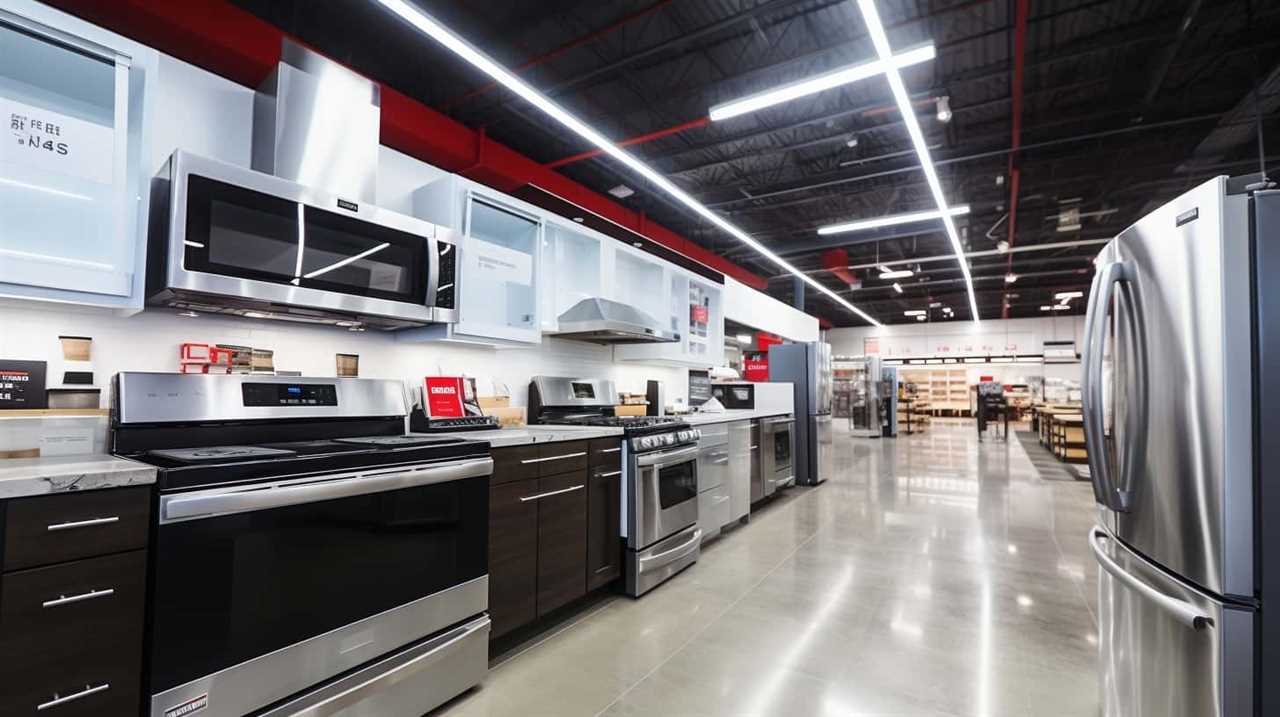
Unplugging Chargers: Myth or Reality
Chargers, when left plugged in, may not actually consume as much electricity as commonly believed. While it is true that chargers draw a small amount of standby power even when not actively charging a device, the overall impact on energy consumption is often minimal. Consider the following points:
- Energy Efficiency: Modern chargers are designed to be more energy-efficient, with advanced power management systems that reduce standby power consumption.
- Phantom Load: The standby power consumed by chargers is often referred to as ‘phantom load.’ While it does exist, the actual electricity consumed is typically negligible compared to other household appliances.
- Energy-Saving Habits: Instead of focusing solely on unplugging phone chargers, adopting energy-saving habits such as using energy-efficient appliances, optimizing heating and cooling systems, and reducing overall energy consumption can have a more significant impact on reducing electricity usage.
The Benefits of Unplugging Appliances for the Environment
Unplugging appliances, such as chargers, can make a substantial environmental impact by significantly reducing energy consumption. By unplugging appliances when they are not in use, individuals can contribute to the overall reduction of energy waste and minimize their environmental footprint.
When appliances are plugged in, they continue to draw power, even when not actively in use. This phenomenon, known as standby power or vampire power, accounts for a significant portion of energy waste in households and businesses. Unplugging these appliances eliminates this unnecessary energy consumption and reduces the strain on power plants, resulting in a positive environmental impact.
Incorporating the habit of unplugging appliances into daily routines can be a simple yet effective way to reduce energy waste and make a difference in preserving our environment.

Tips for Incorporating Unplugging Habits Into Your Daily Routine
Incorporating the habit of regularly disconnecting appliances when not in use is an effective way to conserve electricity. To help you create an unplugging routine, here are some tips:
- Set a reminder: Use your phone or a calendar to schedule regular times to unplug appliances. This will help you establish a routine and make it easier to remember.
- Use power strips: Plug multiple appliances into a power strip and turn it off when not in use. This eliminates the need to unplug each appliance individually, saving time and effort.
- Make it a family effort: Involve your family members in the unplugging routine. Teach them about the benefits of saving electricity and encourage them to unplug appliances when they’re finished using them.
In addition to saving electricity, there are also psychological benefits to unplugging. It can help reduce stress and create a sense of mindfulness by disconnecting from the constant stimulation of electronic devices.
Frequently Asked Questions
How Much Electricity Does Standby Power Consume on Average?
On average, standby power consumption refers to the amount of electricity consumed by appliances when they are in standby mode. This consumption can have a significant impact on electricity bills, making it important to consider the effects of standby power on energy usage.
Can Leaving Appliances Plugged in Overnight Cause a Significant Increase in Electricity Consumption?
Leaving appliances plugged in overnight can potentially lead to a significant increase in electricity consumption due to standby power. Unplugging electronics when not in use can minimize this impact and result in lower electricity bills.
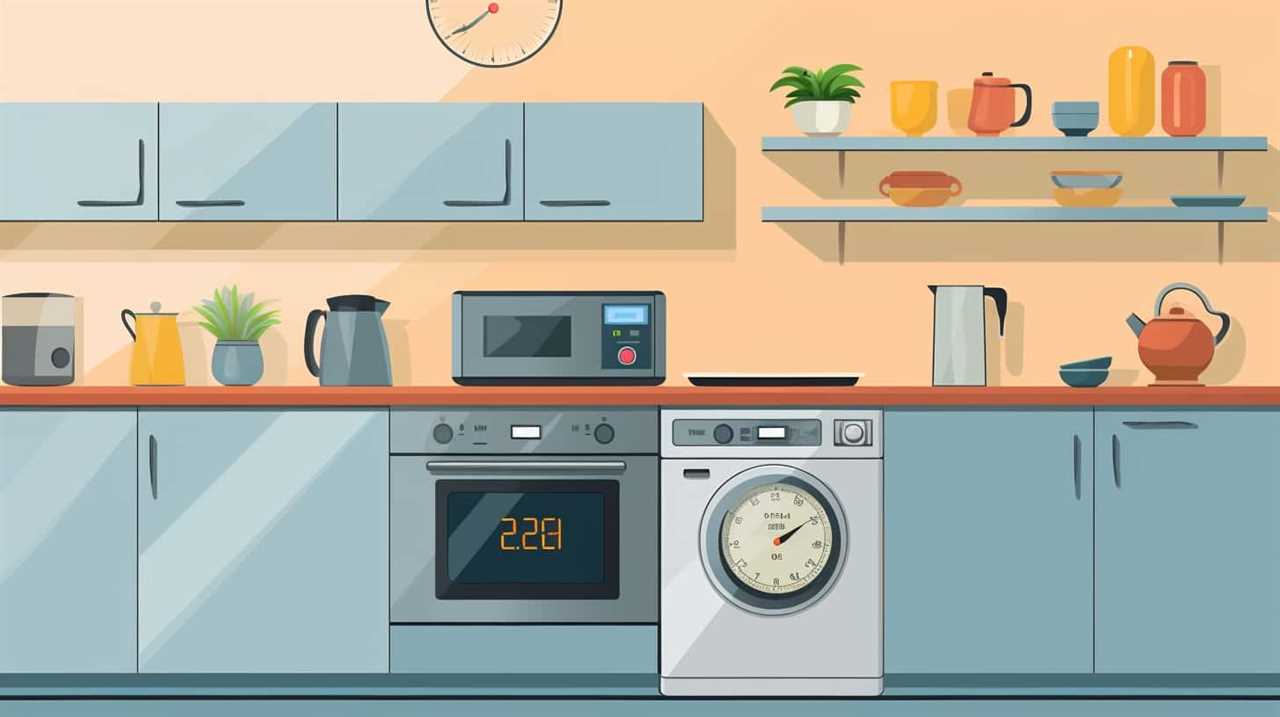
Are Power Strips an Effective Solution for Reducing Standby Power Consumption?
Power strip alternatives for reducing standby power consumption include smart plugs, which can effectively reduce electricity usage. These devices allow for remote control and scheduling, enabling users to easily turn off appliances when not in use, saving energy and reducing costs.
Is It Worth Unplugging Small Appliances Like Coffee Makers and Toasters When Not in Use?
Unplugging small appliances like coffee makers and toasters when not in use can be worth it in terms of energy savings. Modern appliances often have energy-saving modes, but standby power still contributes to overall energy usage.
Can Unplugging Chargers When Not in Use Actually Save Electricity?
Unplugging chargers when not in use can yield energy saving benefits and positively impact electricity bills. By eliminating phantom power consumption, individuals can reduce energy waste and lower their overall electricity costs.
What are the Benefits of Unplugging Appliances to Save Electricity?
Unplugging appliances when not in use can help save electricity and reduce energy consumption. This simple act can lower your energy bills and decrease your carbon footprint. Additionally, it can extend the lifespan of your appliances, saving you money on repairs and replacements in the long run.
Conclusion
In conclusion, unplugging appliances can indeed save electricity and reduce energy consumption. By understanding the impact of standby power and phantom load, individuals can make informed decisions about unplugging their appliances.
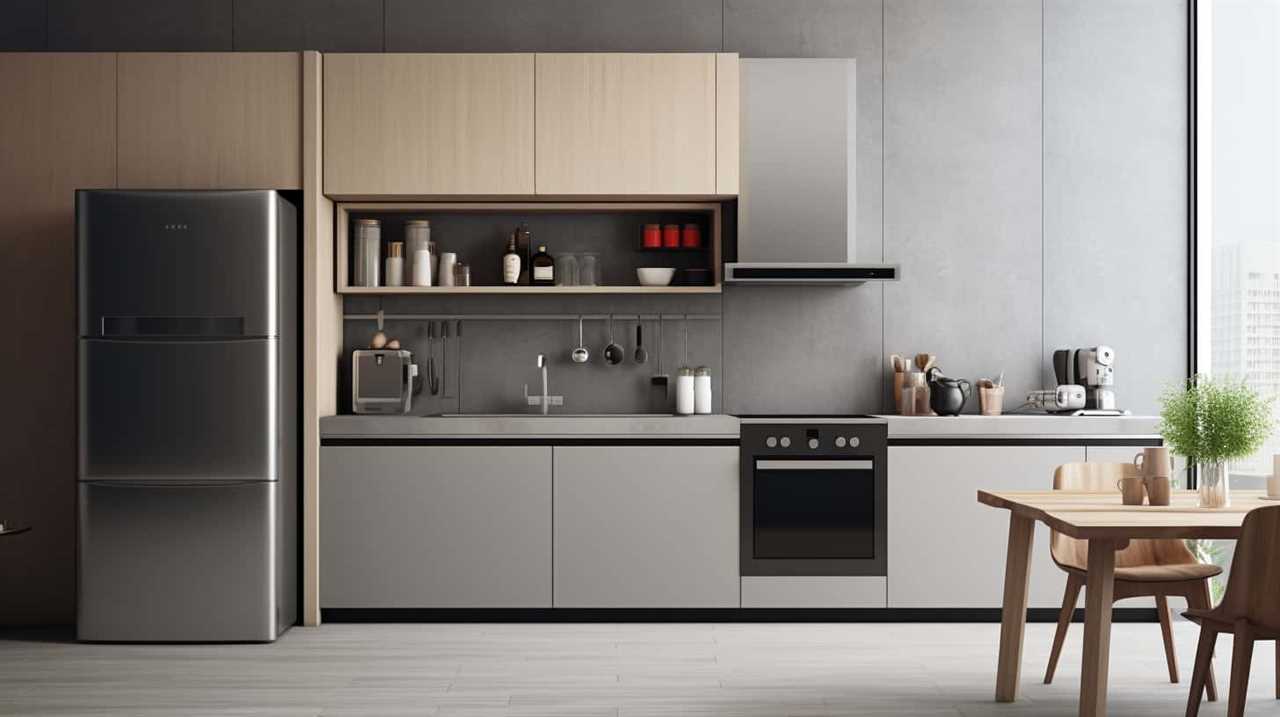
Incorporating the habit of unplugging into our daily routine can have a significant positive impact on the environment. As the saying goes, ‘A small act of unplugging can result in a big difference in energy conservation.’
It is imperative that we take action and adopt these energy-saving practices to contribute to a sustainable future.






